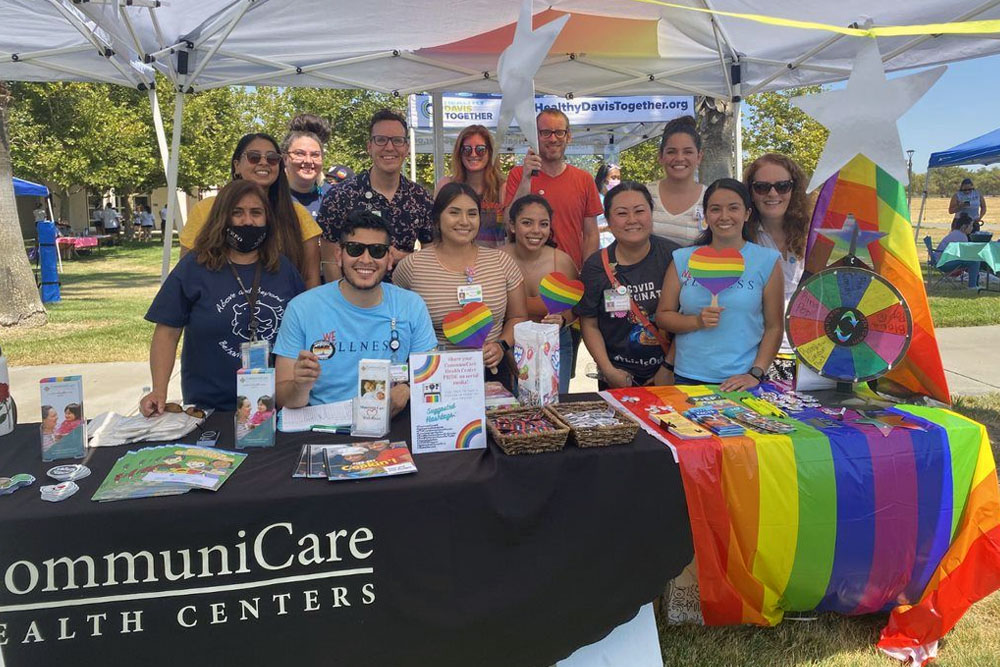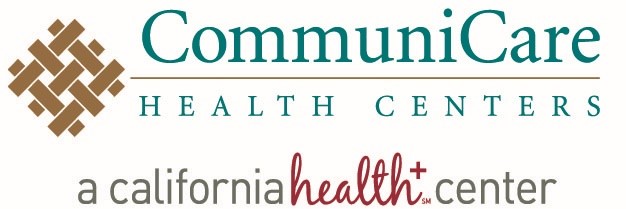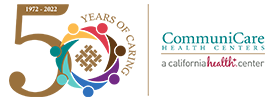
Diversity and Inclusion
Our Mission
CommuniCare Health Centers strives to address, explore, educate, and respond to the diversity of the human experience. We create an inclusive, anti-racist, equitable, culturally humble, and supportive environment where employees model behavior that enriches our community.
Our Purpose
The Diversity, Equity, and Inclusion Committee will guide and hold CommuniCare Health Centers accountable in the integration of diversity, equity, and inclusion into all aspects of the work at CommuniCare Health Centers.
DEI Subcommittees

Words from our Community
Always very good service. The attention and professionalism of the doctor and excellent assistants. Thank you.
DEI Terms and Definitions
The range of human differences, including but not limited to race, ethnicity, gender, gender identity, sexual orientation, age, socioeconomic status, physical ability or attributes, religious or ethical values systems, national origin, political beliefs, and cultures. Diversity means more than just acknowledging and/or tolerating difference. It’s a set of conscious practices that seek to understand and appreciate the interdependence of humanity, cultures, and the natural environment.
Equity differs from equality. Equality refers to treating everyone the same but does not necessarily lead to equitable outcomes because diverse communities have diverse needs and have faced varying obstacles and inequities. Improving equity involves increasing justice and fairness within the procedures and processes of institutions and systems, as well as in the distribution of resources. Tackling equity issues requires an understanding of the root causes of outcome disparities within our society and institution.
Ensuring that people of all backgrounds, identifies, abilities, perspectives, and beliefs have an equal opportunity to belong, achieve, and contribute to their communities. An inclusive institution promotes and sustains a sense of belonging; it values and practices respect where all people are recognized for their inherent worth and dignity, talents, beliefs, backgrounds, and ways of living.
An ally is typically a member of advantaged social groups who uses social power to take a stand against social injustice directed at targeted groups (Whites who speak out against racism, men who are anti-sexist). An ally works to be an agent of social change rather than an agent of oppression. (Adams, et al.)
Hostility toward or discrimination against Jews as a religious, ethnic, or racial group.
Cultural humility is a process of self-reflection to understand personal and systemic biases and to develop and maintain respectful processes and relationships based on mutual trust. Cultural humility involves humbly acknowledging oneself as a learner when it comes to understanding another’s experience.
The way any individual experiences and conceptualizes their gender, regardless of whether or not it differs from the gender culturally associated with their assigned sex at birth. Gender identity is not necessarily visible to others.
The assumptions, stereotypes, and unintentional actions (positive or negative) we make towards others based on identity labels like race, religion, age, gender, sexual orientation, or ability. Because our implicit associations are stored in our subconscious, we may act on our biases without even realizing it. Often, our implicit biases contradict our values (Anti-Defamation League Education Glossary Terms, 2018). Since implicit bias lives in our subconscious, it can be hard to spot — but sometimes all we need is a moment to pause and reflect honestly on our thoughts and behaviors. These questions can help you recognize areas of bias and understand how they might affect our relationships with those around us.
The everyday slights, put-downs, and insults that marginalized people experience in their daily interactions. Microaggressions are often linked to our implicit biases, occur outside of our consciousness, and may be unintentional. Microaggressions may occur verbally (“you speak good English”) or nonverbally (clutching one’s purse more tightly when passing someone on the street) and can make people feel ashamed and dehumanized.
Conscious and unconscious attitudes and behaviors directed towards a subordinate group coupled with the power and privilege of the advantaged group and manifested at individual, cultural, and institutional levels.
A special right, advantage, or immunity granted or available only to a person or group. The advantages enjoyed by a group, beyond what’s available to others. It is institutional, not individual, and largely invisible to those who have it. Unearned access to resources (social power) only readily available to some individuals as a result of their social group.
A system of advantage based on race and supported by institutional structures, policies and practices that create and sustain advantages for the dominant white group while systematically subordinating members of targeted racial groups. This relative advantage for Whites and subordination for individuals of color is supported by the actions of individuals, cultural norms, and values and the institutional structures and practices of society. (Adams, et al.)
A system of advantages that serves to privilege men, subordinate women, denigrate women-identified values and practices, enforce male dominance and control, and reinforce forms of masculinity that are dehumanizing and damaging to men. (Adams, et al)
Social justice includes a vision of society in which the distribution of resources is equitable and all members are physically and psychologically safe and secure. Social justice involves social actors who have a sense of their own agency as well as a sense of social responsibility toward and with others and the society as a whole. The goal of social justice education is full and equal participation of all groups in a society that is mutually shaped to meet their needs. Social justice includes a vision of society that is equitable and all members are physically and psychologically safe and secure. (Adams et al.) [Social justice is both a goal and a process]
An undifferentiated, simplistic attribution that involves a judgment of habits, traits, abilities, or expectations and is assigned as a characteristic to all members of a group regardless of individual variation and with no attention to the relation between the attributions and the social contexts in which they have arisen.
An irrational fear of, and/or hostility towards, individuals who are transgender or who otherwise transgress traditional gender norms. It is often associated with homophobia.
Prejudice – A prejudgment or preconceived opinion, feeling, or belief, usually negative, often based on stereotypes, that includes feelings such as dislike or contempt and is often enacted as discrimination or other negative behavior OR: A set of negative personal beliefs about a social group that leads individuals to prejudge individuals from that group or the group in general, regardless of individual differences among members of that group.
Privileged Group Member – A member of an advantaged social group privileged by birth or acquisition, examples: Whites, men, owning class, upper middle class, heterosexuals, Christians, non-disabled individuals.
White Fragility – Discomfort and defensiveness on the part of a white person when confronted by information about racial inequality and injustice. For example, people of color may find it difficult to speak to white people about white privilege and superiority. The white person may become defensive, and the person of color may feel obligated to comfort the white person because we live in a white-dominated environment. White fragility differs from both white privilege and white supremacy.
White Privilege – refers to the fact that white people have advantages in society that others do not. White supremacy is the belief that people with white skin are superior (see below).
White Supremacy – White supremacy is a historically based, institutionally perpetuated system of exploitation and oppression of continents, nations and individuals of color by white individuals and nations of the European continent; for the purpose of maintaining and defending a system of wealth, power and privilege.
Cisgender – A person who conforms to gender/sex-based expectations of society (also referred to as “Gender-straight” or “Gender Normative”). For example, if a doctor said “it’s a boy!” when you were born, and you identify as a man, then you could be described as cisgender. In other words, ‘cisgender’ is used to describe individuals who are not transgender.
Classism – A system of power and privilege based on the accumulation of economic wealth and social status. Classism is the mechanism by which certain groups of individuals, considered as a unit according to their economic, occupational, or social status, benefit at the expense of other groups.
Gender Expression – The manner in which any individual’s gender identity is expressed, including, but not limited to, through dress, appearance, manner, or speech. Examples of gender expression include but are not limited to femininity, masculinity, and androgyny.
Genderism – The system of belief that there are only two genders (men and women) and that gender is inherently tied to one’s sex assigned at birth. It holds cisgender individuals as superior to transgender individuals, and punishes or excludes those who don’t conform to society’s expectations of gender.
Heterosexism – Assuming every person to be heterosexual therefore marginalizing persons who do not identify as heterosexual. It is also believing heterosexuality to be superior to homosexuality and all other sexual orientations.
Microinvalidations – Communications that subtly exclude, negate or nullify the thoughts, feelings or experiential reality of a person of color. For instance, white individuals often ask Asian-Americans where they were born, conveying the message that they are perpetual foreigners in their own land.
Islamophobia – The fear and/or hatred of Islam, Muslims or Islamic culture and history.
Intersectionality – An approach largely advanced by women of color, arguing that classifications such as gender, race, class, and others cannot be examined in isolation from one another; they interact and intersect in individuals’ lives, in society, in social systems, and are mutually constitutive. Exposing [one’s] multiple identities can help clarify they ways in which a person can simultaneously experience privilege and oppression. For example, a Black woman in America does not experience gender inequalities in exactly the same way as a white woman, nor racial oppression identical to that experienced by a Black man. Each race and gender intersection produces a qualitatively distinct life.
Appropriation – Cultural appropriation, also called cultural misappropriation, occurs when a person from one culture adopts the fashion, iconography, trends, or styles from another culture. Some of the most controversial and harmful examples of cultural appropriation happen when the culture being appropriated is one of a historically oppressed group.
Feminism – The theory of and commitment to political, economic, social, and personal equity of people who are perceived of or present as different genders. Feminism acknowledges the intersectional nature of identities, is inclusive, justice oriented and transformative. (influenced by the UC Davis Feminist Research Institute, https://fri.ucdavis.edu/)
Toxic Masculinity – Adherence to traditional male gender roles that consequently stigmatize and limit the emotions boys and men may comfortably express while elevating other emotions, such as anger.
- Adams, Maurianne et al. (1997) Teaching for Diversity and Social Justice
- A Sourcebook. New York: Rutledge Richards, Heraldo et al. (2006) Addressing Diversity in Schools: Culturally Responsive Pedagogy National Center for Culturally Responsive Educational Systems. Institute for Democratic Renewal and Project Change Anti-Racism Initiative.
- A Community Builder’s Tool Kit: 15 Tools for Creating Healthy, Productive Interracial/Multicultural Communities. Claremont, CA: Claremont Graduate University, 2001. pages 32-33 Mark A. King, Anthony Sims, and David Osher,
- “How is Cultural Competence Integrated in Education?” http://cecp.air.org/cultural/Q_integrated.htm Johnson, Allan G. (2001) Privilege, power, and Difference. New York: McGraw Hill Teachingtolerance.org Center for Assessment and Policy Development Tatum, Beverly (1997 )
- Why Are All the Black Kids Sitting Together in the Cafeteria?. Sue, D. W., Lin, A. I., Torino, G. C., Capodilupo, C. M., & Rivera, D. P. (2009). Racial microaggressions and difficult dialogues on race in the classroom. Cultural Diversity and Ethnic Minority Psychology, 15, 183 – 190.
- Racial Equity Tools, www. Racialequitytools.org National Center for Transgender Equality, http://www.transequality.org/ Herek, G. M., Gillis, J. R., & Cogan, J. C. (2009).
Internalized stigma among sexual minority adults: - Insights from a social psychological perspective. Journal of Counseling Psychology, 56, 32-43. UC Berkley Gender Equity Resource Center, http://geneq.berkeley.edu/
- Critical race theory, race and gender microaggressions, and the experience of Chicana and Chicano scholars, Daniel G. Solarzano (1998) Qualitative Studies in Education, VOL. 11, NO. 1, 121-136

